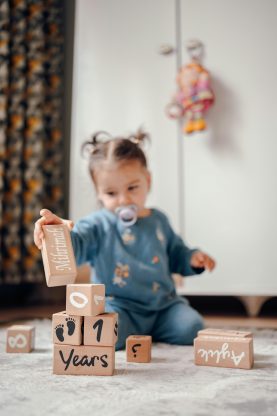Table of Contents
Discussing Emergency Contact Information
When leaving your child in the care of a babysitter, it is essential to provide them with all necessary emergency contact information. This includes phone numbers for both parents, as well as any other family members or neighbors who may be able to assist in case of an emergency. Make sure your babysitter knows where to find this information, whether it’s written down or programmed into their phone. Additionally, it’s a good idea to leave a list of important numbers posted somewhere in your home, such as on the refrigerator or by the phone.
On-Demand Childcare in Your Neighborhood
Book a Sitter
Going Over Allergies and Medical Conditions
If your child has any allergies or medical conditions, it is crucial that your babysitter is aware of them. Make sure to provide detailed information on what your child is allergic to and how to handle a reaction. If your child requires medication, be sure to show the babysitter where it is kept and how to administer it if necessary. It’s also a good idea to provide a list of any other medical conditions or special instructions that your babysitter should be aware of, such as dietary restrictions or behavioral issues.
Reviewing Household Rules and Safety Measures
Before leaving your child with a babysitter, it’s important to review any household rules and safety measures that they should be aware of. This may include things like bedtime routines, screen time limits, and any other specific instructions you have for your child. It’s also a good idea to point out any potential hazards in your home, such as sharp objects or dangerous chemicals, and show your babysitter where emergency supplies are kept, such as a first aid kit or fire extinguisher.

Establishing Emergency Procedures
In the event of an emergency, it’s crucial that your babysitter knows what to do and how to respond quickly and effectively. Make sure to go over emergency procedures with your babysitter, such as what to do in case of a fire, severe weather, or a medical emergency. Provide clear instructions on how to evacuate the house safely and where to go for help.
It’s also a good idea to have a backup plan in place in case your babysitter is unable to reach you or another emergency contact.
Providing First Aid and CPR Training
While it’s not required, providing your babysitter with basic first aid and CPR training can give you added peace of mind knowing that they are prepared to handle an emergency situation. There are many online resources and local organizations that offer classes in first aid and CPR specifically geared towards babysitters. Investing in this training for your babysitter can be a valuable asset in ensuring the safety and well-being of your child when you are not around.
In conclusion, creating an emergency plan for your babysitter is an essential step in keeping your child safe and secure while you are away. By discussing emergency contact information, going over allergies and medical conditions, reviewing household rules and safety measures, establishing emergency procedures, and providing first aid and CPR training, you can help your babysitter feel prepared and confident in handling any situation that may arise. Taking the time to plan and communicate these important details will ultimately provide you with peace of mind knowing that your child is in good hands, no matter what may happen.










